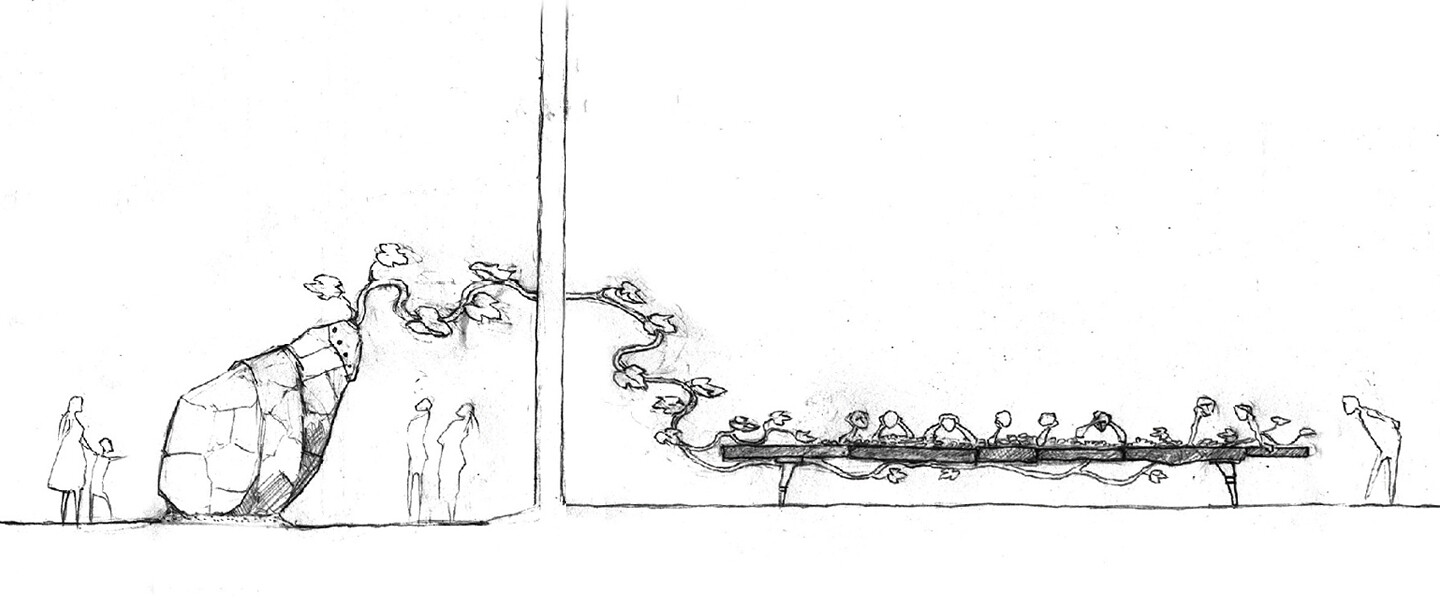Kinerapan: Right of Crawling
Taiwan’s Representation at the 59th Venice Biennale 2022
April 23–November 27, 2022
Taipei Fine Arts Museum, along with artist Sakuliu Pavavaljung and curator Patrick Flores, have the pleasure to announce Kinerapan: Right of Crawling, the new project representing Taiwan at the 59th Venice Biennale in 2022. Sakuliu will create a spiritual site which comprises several new works including sculpture, installation and animation that collectively tell a contemporary story through the traditional indigenous narrative.
Sakuliu was born in Sandimen Township, Pingtung County, Taiwan (Tavadran Village of the Paiwan people). Having grown up in a family of artisans, he has developed works encompassing such diverse forms as painting, sculpture, installation and architecture. Concerned that his traditional culture was being eroded or was even gradually disappearing, Sakuliu decided to actively sustain and revive it by documenting tribal wisdom in drawings and manuscripts, rebuilding stone slab houses, creating sculptures and leading ethnic awareness movements. His creative practice is rooted in engagement with everyday society, and his status as a well-rounded artist won him the National Culture and Arts Award in the fine arts category in 2018. He has recently concentrated on classical Paiwan philosophy, expressing his thought and research findings in both text and image form.
The exhibition title Kinerapan is a Paiwan word, which carries a wide range of meanings, from the plant crawling to scope, distance and depth, such as the area covered by a vast forest, the distance travelled by a river, or the space inhabited by a species. Broadly speaking, the word implies both abstract distance and temporal span, including the farthest that one’s imagination can reach. Also, in the development of the human being, the crawling stage is important in the struggle with gravity and in the beginning of exploring the world. The concept of “right” is centered on the quest for fairness and dignity. The exhibition is built upon two main ethical systems: the “Semiljeva” (Paiwan for joy of sharing and giving) and “Lingulj” (Paiwan for circle, emblematic of concentric, iterative giving)—to introduce a network of symbiosis and coexistence fostered by interspecies reciprocity and interdependence. Through representing the spatial order, belief and value system of the indigenous culture, the artist responds to the changing society as well as the conflicts, anxieties and tensions it has incurred over time.
For the exhibition, Sakuliu will use an artistic language informed by storytelling and imagination to guide the audience into a spiritual world that evokes contemporary reality and life. The artist projects his imagination through constructing a space symbolic of a family house that embodies Paiwan worldview: “What would it be like if the Earth were a stone-slab house and the planet’s entire population were my family? How should I envision such a more expansive space of Kinerapan and those inhabiting it?” When organic crops are exchanged into long-lasting inorganic currency, what is its effect on the concept of sharing? How does one judge the ownership of fruits if the plants have crawled into the neighbors’ fields? Starting from indigenous art, Sakuliu has always kept alert and sensitive to interactions between multiple cultural roots. His art practice has continuously translated the profound legacies of local wisdom and technology to meditate on cross-cultural issues in contemporary society and redistribute the indigenous genealogy across and into various historical contexts. Sakuliu states, “I use my personal understandings of space, land and ecology as my script and try to find a suitable way based on Paiwan cosmic view to convey, allowing knowledge to be transmitted across cultural differences as well as through time and space.”
According to curator Flores, “The exhibition centers on the sprawling practice of Sakuliu. It surveys its many lively forms that offer both an inspiring indigenous cosmology and an urgent everyday life. Sakuliu’s knowledge of the Paiwan lifeworld as a doer and a thinker intertwines with his sense of responsibility as a citizen-artist. This knowledge produces a contemporary expression rooted in a vast Austronesian ecology and speaking to common interests within Taiwan and across the world.”



